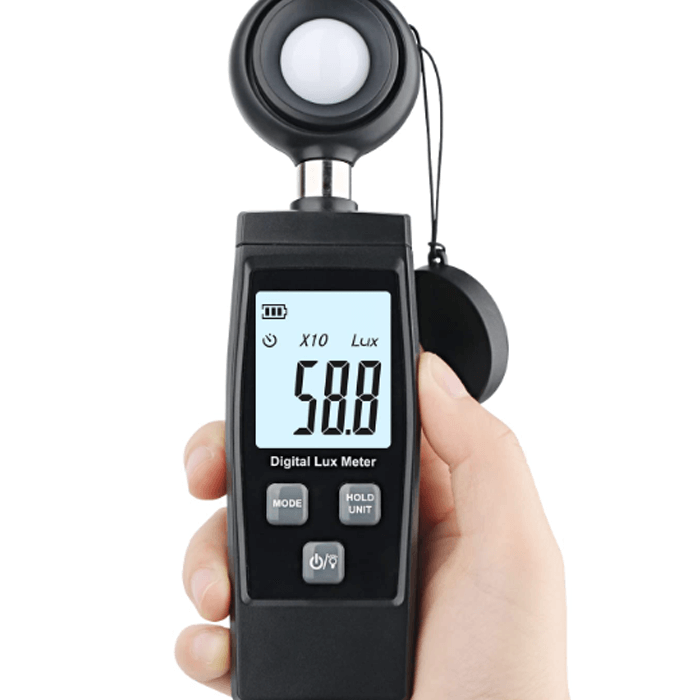Understanding the Importance of CRI, CCT, and Foot-Candle for LED Lighting
High quality lighting is key to ensuring your environment is well-lit and the colors are accurately represented. To understand this concept better, it is important to familiarize yourself with three key measures: CRI, CCT, and foot-candle. These measures are crucial when evaluating LED lights, and are all discussed in detail on the Project and Product Criteria page by Leonlite. In this article, we'll take a closer look at each of these measures to help you understand the quality of lights and how to choose energy-efficient lighting solutions.
Color Rendering Index (CRI):
The color rendering index (CRI) measures a light's ability to accurately represent the colors of objects in comparison to natural light. A high CRI is generally desirable, although the importance of CRI can vary depending on the application. For example, if you're lighting a film set, a high CRI light source is important to show colors as they appear in natural light. However, in an underground tunnel, the color accuracy may not be as important. In general, a high CRI is seen as a benefit in almost any situation.
Color Rendering Index (CRI):
The color rendering index (CRI) measures a light's ability to accurately represent the colors of objects in comparison to natural light. A high CRI is generally desirable, although the importance of CRI can vary depending on the application. For example, if you're lighting a film set, a high CRI light source is important to show colors as they appear in natural light. However, in an underground tunnel, the color accuracy may not be as important. In general, a high CRI is seen as a benefit in almost any situation.

The CRI value is usually advertised on commercially available lighting products as the CIE Ra value, which is a standard set by the International Commission of Illumination in Vienna, Austria. However, some experts prefer color appearance models (CAM) to CRI as a way to measure color, especially for color temperatures below 5000K. One of the most popular CAM models is the CIECAM02, which was published by the CIE in 2002. Despite this, CRI is still the most commonly used index to evaluate the color rendering ability of a light by consumers.
Color Temperature:
Color temperature is a way to describe the character of visible light from different light sources. The color temperature scale compares the visible light emitted by a light source to that of a "blackbody" emitter (an object with a surface temperature equal to its color temperature value).
One good example of this is incandescent bulbs. As the filament of an incandescent bulb is heated, it will begin to glow. The color of the glow changes as the surface temperature of the filament increases. The glow will start as a deep red color at low temperatures (around 1500K), then transition to orange, yellow, and finally white. If the filament were to get hot enough (which is not usually the case for incandescent bulbs), it would glow light blue.
The deep red glow at a low surface temperature is typically referred to as a "warm" color temperature because people associate the color red with heat. Conversely, the white or light blue glow at a high filament temperature is referred to as a "cool" color temperature because people associate the color blue with coldness.
It's important to note that the actual color temperature can vary depending on the amount of power applied to the light. More power will result in a hotter filament temperature and a "cooler" (higher K value) color temperature.
Correlated Color Temperature (CCT):
Correlated color temperature (CCT) is a measure used for lights that do not emulate blackbody radiation, such as fluorescent lights and LED lights. CCT is used to describe the dominant color tone of these non-blackbody light sources, so they can be accurately compared to those that do emulate blackbody radiation (like incandescent bulbs). Ratings on the lower end of the scale (around 2000K) are typically referred to as "warm" (red and yellow colors), while ratings on the higher end of the scale (5000K and above) are typically referred to as "cool" (white to light blue).

Foot-Candle:
Foot-candle is a unit of measure used to describe the intensity of light falling on a surface. It is the amount of light that is emitted by one candle, shining on one square foot of surface area. This unit of measurement is useful for evaluating the brightness of a light source, as well as the amount of light needed for a particular task. For example, if you're lighting a workspace, you may need to provide a certain amount of foot-candles in order to ensure the environment is well-lit and workers can perform their tasks efficiently.

In conclusion, the measures of CRI, CCT, and foot-candle are all important when evaluating LED lights and choosing energy-efficient lighting solutions. A high CRI will ensure that colors are accurately represented, while the color temperature will give you an idea of the tone of the light. Foot-candle will help you determine the brightness of the light and the amount of light you need for a task. To learn more about these measures and find high quality LED lighting solutions, visit Leonlite's Project and Product Criteria page.
(Pics sourced from internet)












